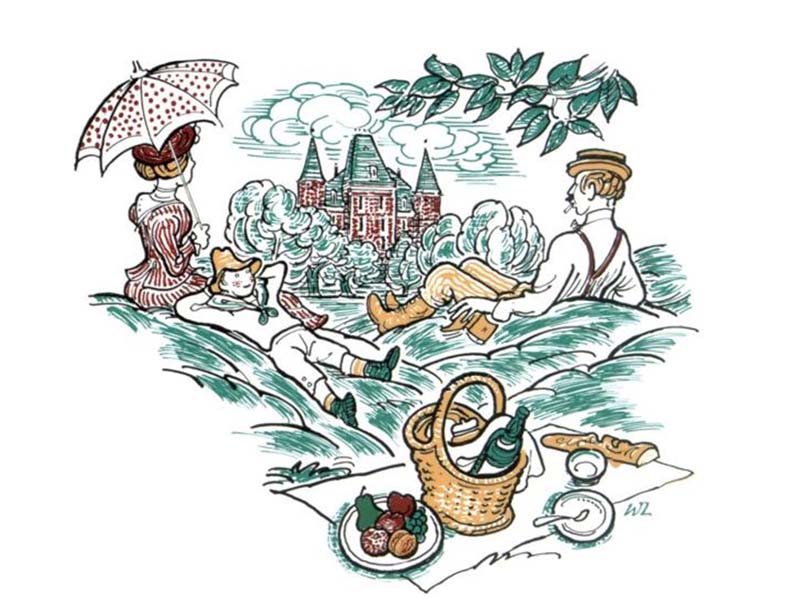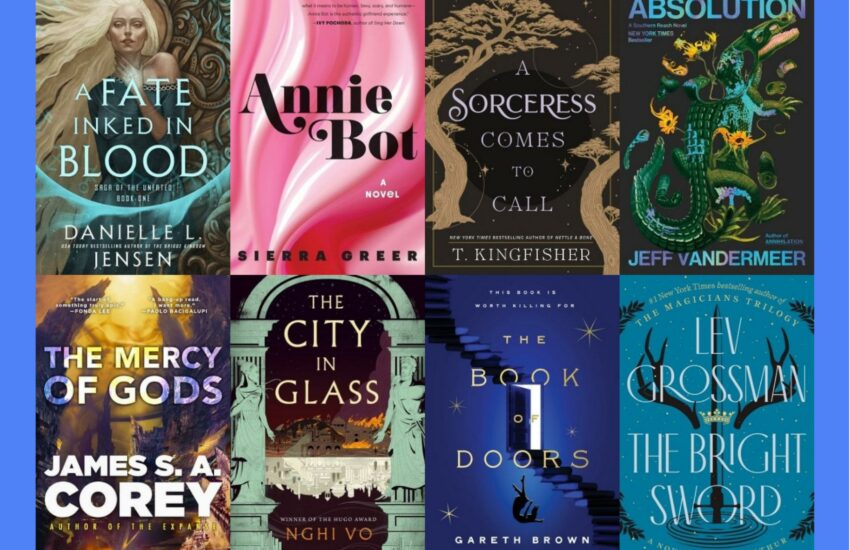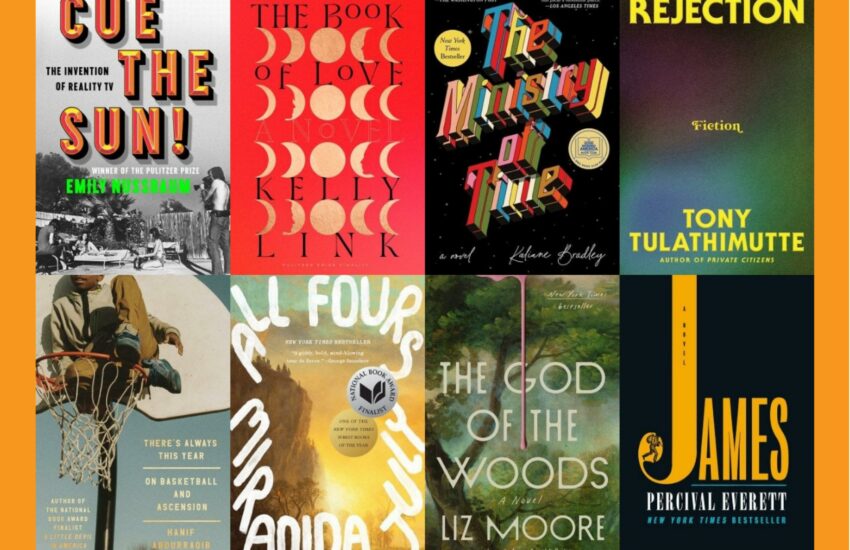The Best French Literature Of All-Time
“What are the best French Literature Books OF All-Time?” We looked at 163 of the top French Literature, aggregating and ranking them so we could answer that very question!
The top 26 titles, all appearing on 2 or more “Best French Literature” book lists, are ranked below by how many lists they appear on. The remaining 100+ titles, as well as the lists we used are in alphabetical order at the bottom of the page.
Happy Scrolling!
Top 26 French Literature Books
26 .) A Moveable Feast by Ernest Hemingway
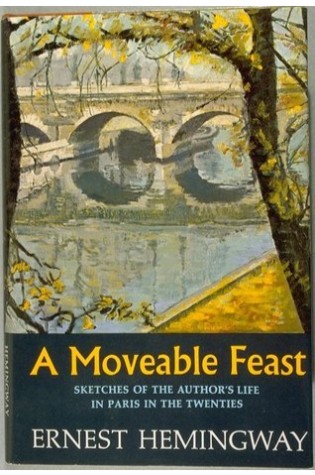 Lists It Appears On:
Lists It Appears On:
- Fodors
- Red Online
Hemingway’s memories of his life as an unknown writer living in Paris in the twenties are deeply personal, warmly affectionate and full of wit. Looking back not only at his own much younger self, but also at the other writers who shared Paris with him – James Joyce, Wyndham Lewis, Scott and Zelda Fitzgerald – he recalls the time when, poor, happy and writing in cafes, he discovered his vocation. Written during the last years of Hemingway’s life, his memoir is a lively and powerful reflection of his genius that scintillates with the romance of the city.
25 .) Bel Ami (1885) by Guy de Maupassant
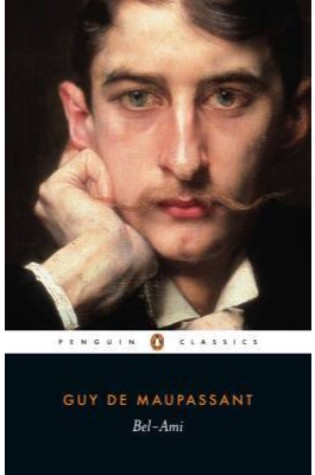 Lists It Appears On:
Lists It Appears On:
- Fluent U
- Qwik Lit
Guy de Maupassant’s scandalous tale of an opportunistic young man corrupted by the allure of power, “Bel-Ami” is translated with an introduction by Douglas Parmee in “Penguin Classics”. Young, attractive and very ambitious, George Duroy, known to his admirers as Bel-Ami, is offered a job as a journalist on La Vie francaise and soon makes a great success of his new career. But he also comes face to face with the realities of the corrupt society in which he lives – the sleazy colleagues, the manipulative mistresses and wily financiers – and swiftly learns to become an arch-seducer, blackmailer and social climber in a world where love is only a means to an end. Written when Maupassant was at the height of his powers, “Bel-Ami” is a novel of great frankness and cynicism, but it is also infused with the sheer joy of life – depicting the scenes and characters of Paris in the belle epoque with wit, sensitivity and humanity. Douglas Parmee’s translation captures all the vigour and vitality of Maupassant’s novel. His introduction explores the similarities between Bel-Ami and Maupassant himself and demonstrates the skill with which the author depicts his large cast of characters and the French society of the Third Republic.
24 .) Dangerous Liaisons (1782) by Pierre Chardelos de Laclos
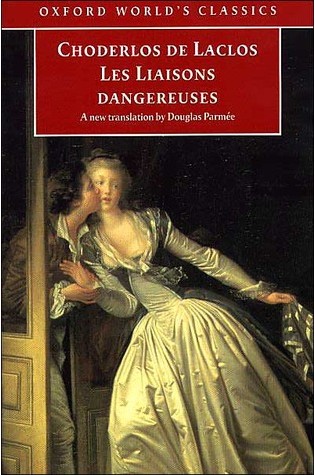 Lists It Appears On:
Lists It Appears On:
- Qwik Lit
- The Culture Trip
The complex moral ambiguities of seduction and revenge make Les Liaisons dangereuses (1782) one of the most scandalous and controversial novels in European literature. The subject of major film and stage adaptations, the novel’s prime movers, the Vicomte de Valmont and the Marquise de Merteuil, form an unholy alliance and turn seduction into a game – a game which they must win. This new translation gives Laclos a modern voice, and readers will be able a judge whether the novel is as “diabolical” and “infamous” as its critics have claimed, or whether it has much to tell us about the kind of world we ourselves live in. David Coward’s introduction explodes myths about Laclos’s own life and puts the book in its literary and cultural context.
23 .) L’Élégance du Hérisson by Muriel Barbery
Lists It Appears On:
- French Together
- iTalki
22 .) La Vie mode d’emploi (Life A User’s Manual) by Georges Perec
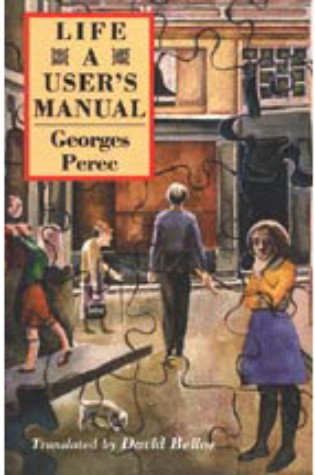 Lists It Appears On:
Lists It Appears On:
- BBC
- Five Books
Life is an unclassified masterpiece, a sprawling compendium as encyclopedic as Dante’s Commedia and Chaucer’s Canterbury Tales and, in its break with tradition, as inspiring as Joyce’s Ulysses. Perec’s spellbinding puzzle begins in an apartment block in the XVIIth arrondissement of Paris where, chapter by chapter, room by room, like an onion being peeled, and extraordinary rich cast of characters is revealed in a series of tales that are bizarre, unlikely, moving, funny, or (sometimes) quite ordinary. From the confessions of a racing cyclist to the plans of an avenging murderer, from a young ethnographer obsessed with a Sumatran tribe to the death of a trapeze artist, from the fears of an ex-croupier to the dreams of a sex-change pop star to an eccentric English millionaire who has devised the ultimate pastime, Life is a manual of human irony, portraying the mixed marriages of fortunes, passions and despairs, betrayals and bereavements, of hundreds of lives in Paris and around the world. But the novel in more than an extraordinary range of fictions; it is a closely observed account of life and experience. The apartment block’s one hundred rooms are arranged in a magic square, and the book as a whole is peppered with a staggering range of literary puzzles and allusions, acrostics, problems of chess and logic, crosswords, and mathematical formulae. All are there for the reader to solve in the best tradition of the detective novel.
21 .) Le Père Goriot by Honoré de Balzac
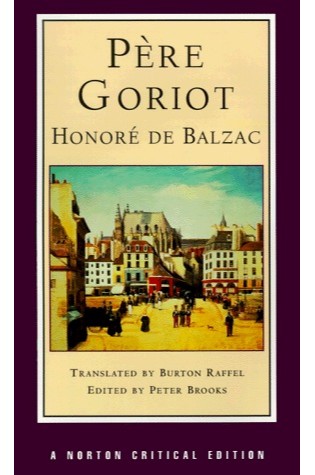 Lists It Appears On:
Lists It Appears On:
- Complete France
- French Together
Pere Goriot’ is the tragic story of a father whose obsessive love for his two daughters leads to his financial and personal ruin. Interwoven with this theme is that of the impoverished young aristocrat, Rastignac, come to Paris from the provinces to make his fortune, who befriends Goriot and becomes involved with the daughters. The story is set against the background of a whole society driven by social ambition and lust for money.’
20 .) Le Petit Nicolas by René Goscinny
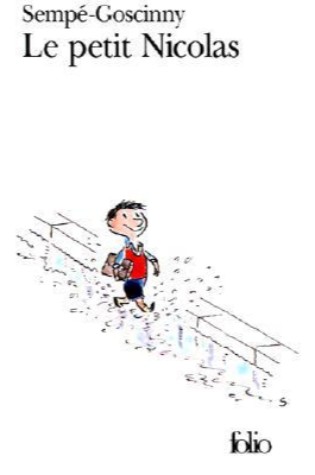 Lists It Appears On:
Lists It Appears On:
- BBC
- Talkin French
La maîtresse est inquiète, le photographe s’éponge le front, le Bouillon devient tout rouge, les mamans ont mauvaise mine, les papas font les guignols, le directeur part à la retraite, quant à l’inspecteur, il est reparti aussi vite qu’il était venu. Pourtant, à l’école ou en famille, Geoffroy, Agnan, Eudes, Rufus, Clotaire, Maixent, Alceste, Joachim… et le Petit Nicolas sont – presque – toujours sages.
19 .) My Father’s Glory by Marcel Pagnol
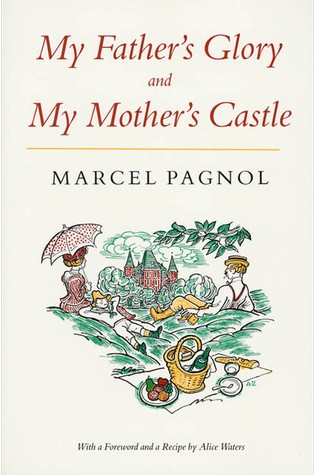 Lists It Appears On:
Lists It Appears On:
- Book Riot
- My French Life
Bathed in the warm clarity of the summer sun in Provence, Marcel Pagnol’s childhood memories celebrate a time of rare beauty and delight.Called by Jean Renoir “the leading film artist of his age,” Pagnol is best known for such films as The Baker’s Wife, Harvest, Fanny, and Topaze, as well as the screen adaptations of his novels Jean de Florette and Manon of the Springs (North Point, 1988). But he never forgot the magic of his Provencal childhood, and when he set his memories to paper late in life the result was a great new success. My Father’s Glory and My Mother’s Castle appeared on the scene like a fresh breeze, captivating readers with its sweet enchantments. Pagnol recalls his days hunting and fishing in the hill country, his jaunts about Marseilles, his schoolboy diversions, and above all his family: his anticlerical father and sanctimonious uncle, his mild and beautiful mother, and many others. This bright and lively book sparkles with the charm and magic that were Marcel Pagnol’s own.
18 .) My Life in France by Julia Child
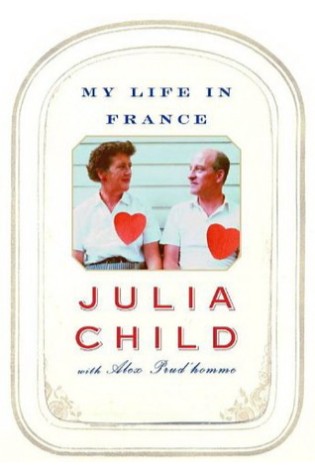 Lists It Appears On:
Lists It Appears On:
- Fodors
- Red Online
The bestselling story of Julia’s years in France–and the basis for Julie & Julia, starring Meryl Streep and Amy Adams–in her own words. Although she would later singlehandedly create a new approach to American cuisine with her cookbook Mastering the Art of French Cooking and her television show The French Chef, Julia Child was not always a master chef. Indeed, when she first arrived in France in 1948 with her husband, Paul, who was to work for the USIS, she spoke no French and knew nothing about the country itself. But as she dove into French culture, buying food at local markets and taking classes at the Cordon Bleu, her life changed forever with her newfound passion for cooking and teaching. Julia’s unforgettable story–struggles with the head of the Cordon Bleu, rejections from publishers to whom she sent her now-famous cookbook, a wonderful, nearly fifty-year long marriage that took the Childs across the globe–unfolds with the spirit so key to Julia’s success as a chef and a writer, brilliantly capturing one of America’s most endearing personalities.
17 .) Nadja (1928) by Andre Breton
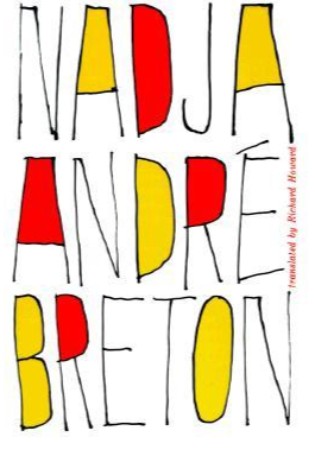 Lists It Appears On:
Lists It Appears On:
- Complete France
- Qwik Lit
Nadja, originally published in France in 1928, is the first and perhaps best Surrealist romance ever written, a book which defined that movement’s attitude toward everyday life. The principal narrative is an account of the author’s relationship with a girl in the city of Paris, the story of an obsessional presence haunting his life. The first-person narrative is supplemented by forty-four photographs which form an integral part of the work — pictures of various “surreal” people, places, and objects which the author visits or is haunted by in Nadja’s presence and which inspire him to mediate on their reality or lack of it. The Nadja of the book is a girl, but, like Bertrand Russell’s definition of electricity as “not so much a thing as a way things happen,” Nadja is not so much a person as the way she makes people behave. She has been described as a state of mind, a feeling about reality, a kind of vision, and the reader sometimes wonders whether she exists at all. yet it is Nadja who gives form and structure to the novel.
16 .) Nausea (1938) by Jean-Paul Sartre
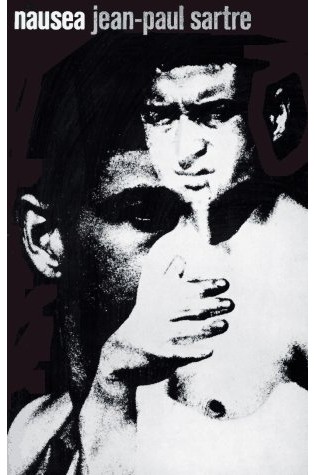 Lists It Appears On:
Lists It Appears On:
- Complete France
- Qwik Lit
Nausea is the story of Antoine Roquentin, a French writer who is horrified at his own existence. In impressionistic, diary form he ruthlessly catalogues his every feeling and sensation about the world and people around him. His thoughts culminate in a pervasive, overpowering feeling of nausea which “spread at the bottom of the viscous puddle, at the bottom of our time, the time of purple suspenders and broken chair seats; it is made of wide, soft instants, spreading at the edge, like an oil stain.” Roquentin’s efforts to come to terms with his life, his philosophical and psychological struggles, give Sartre the opportunity to dramatize the tenets of his Existentialist creed. The introduction for this edition of Nausea by Hayden Carruth gives background on Sartre’s life and major works, a summary of the principal themes of Existentialist philosophy, and a critical analysis of the novel itself.
15 .) Paris France by Gertrude Stein
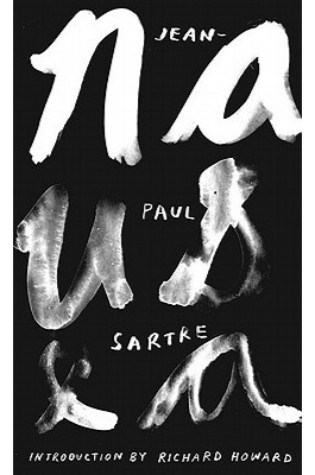 Lists It Appears On:
Lists It Appears On:
- Fodors
- Red Online
Nausea is the story of Antoine Roquentin, a French writer who is horrified at his own existence. In impressionistic, diary form he ruthlessly catalogues his every feeling and sensation. His thoughts culminate in a pervasive, overpowering feeling of nausea which “spreads at the bottom of the viscous puddle, at the bottom of our time — the time of purple suspenders and broken chair seats; it is made of wide, soft instants, spreading at the edge, like an oil stain.” Roquentin’s efforts to come to terms with life, his philosophical and psychological struggles, give Sartre the opportunity to dramatize the tenets of his Existentialist creed.
14 .) Submission by Michel Houellebecq
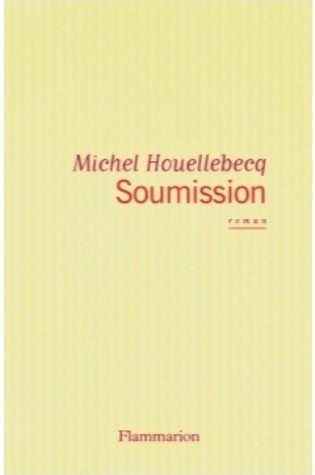 Lists It Appears On:
Lists It Appears On:
- Book Riot
- Electric Literature
Dans une France assez proche de la nôtre, un homme s’engage dans la carrière universitaire. Peu motivé par l’enseignement, il s’attend à une vie ennuyeuse mais calme, protégée des grands drames historiques. Cependant les forces en jeu dans le pays ont fissuré le système politique jusqu’à provoquer son effondrement. Cette implosion sans soubresauts, sans vraie révolution, se développe comme un mauvais rêve. Le talent de l’auteur, sa force visionnaire nous entraînent sur un terrain ambigu et glissant ; son regard sur notre civilisation vieillissante fait coexister dans ce roman les intuitions poétiques, les effets comiques, une mélancolie fataliste. Ce livre est une saisissante fable politique et morale.
13 .) The Erasers (1953) by Alain Robbe-Grillet
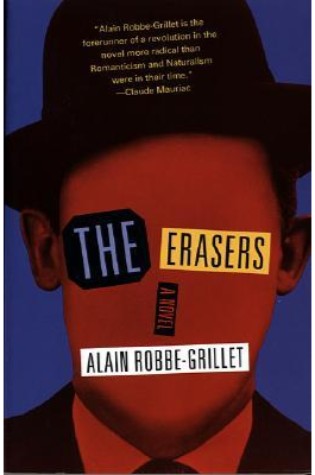 Lists It Appears On:
Lists It Appears On:
- BBC
- Qwik Lit
Alain Robbe-Grillet is internationally hailed as the chief spokesman for the noveau roman and one of the great novelists of the twentieth century. The Erasers, his first novel, reads like a detective story but is primarily concerned with weaving and then probing a complete mixture of fact and fantasy. The narrative spans the twenty-four-hour period following a series of eight murders in eight days, presumably the work of a terrorist group. After the ninth murder, the investigation is turned over to a police agent, who may in fact be the assassin. Both an engrossing mystery and a sinister deconstruction of reality, The Erasers intrigues and unnerves with equal force as it pull us along to its ominous conclusion.
12 .) The Mersault Investigation by Kamel Daoud
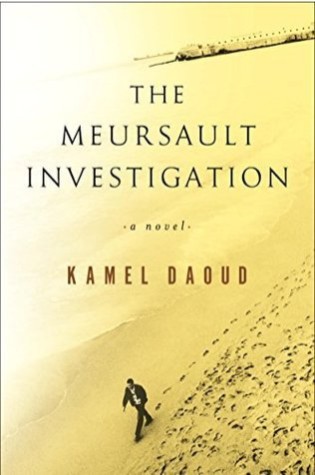 Lists It Appears On:
Lists It Appears On:
- Book Riot
- Electric Literature
He was the brother of “the Arab” killed by the infamous Meursault, the antihero of Camus’s classic novel. Seventy years after that event, Harun, who has lived since childhood in the shadow of his sibling’s memory, refuses to let him remain anonymous: he gives his brother a story and a name—Musa—and describes the events that led to Musa’s casual murder on a dazzlingly sunny beach. In a bar in Oran, night after night, he ruminates on his solitude, on his broken heart, on his anger with men desperate for a god, and on his disarray when faced with a country that has so disappointed him. A stranger among his own people, he wants to be granted, finally, the right to die. The Stranger is of course central to Daoud’s story, in which he both endorses and criticizes one of the most famous novels in the world. A worthy complement to its great predecessor, The Meursault Investigation is not only a profound meditation on Arab identity and the disastrous effects of colonialism in Algeria, but also a stunning work of literature in its own right, told in a unique and affecting voice.
11 .) The Three Musketeers by Alexandre Dumas
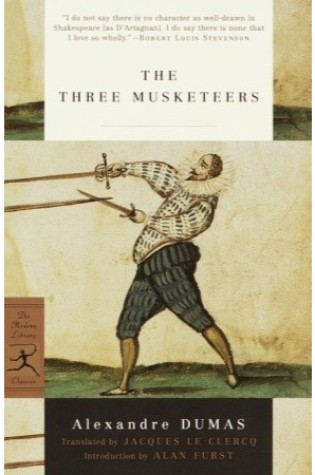 Lists It Appears On:
Lists It Appears On:
- Book Riot
- Quirk Books
Alexandre Dumas’s most famous tale— and possibly the most famous historical novel of all time— in a handsome hardcover volume. This swashbuckling epic of chivalry, honor, and derring-do, set in France during the 1620s, is richly populated with romantic heroes, unattainable heroines, kings, queens, cavaliers, and criminals in a whirl of adventure, espionage, conspiracy, murder, vengeance, love, scandal, and suspense. Dumas transforms minor historical figures into larger- than-life characters: the Comte d’Artagnan, an impetuous young man in pursuit of glory; the beguilingly evil seductress “Milady”; the powerful and devious Cardinal Richelieu; the weak King Louis XIII and his unhappy queen—and, of course, the three musketeers themselves, Athos, Porthos, and Aramis, whose motto “all for one, one for all” has come to epitomize devoted friendship. With a plot that delivers stolen diamonds, masked balls, purloined letters, and, of course, great bouts of swordplay, The Three Musketeers is eternally entertaining.
10 .) Thérèse Raquin by Émile Zola
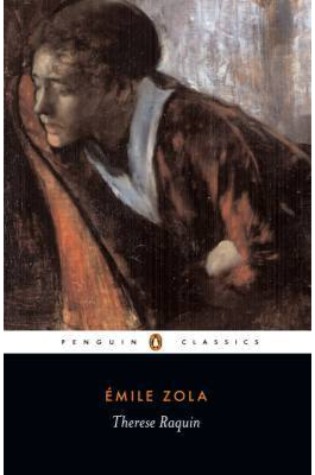 Lists It Appears On:
Lists It Appears On:
- Complete France
- Fluent U
One of Zola’s most famous realistic novels, Therese Raquin is a clinically observed, sinister tale of adultery and murder among the lower classes in nineteenth-century Parisian society. Set in the claustrophobic atmosphere of a dingy haberdasher’s shop in the passage du Pont-Neuf in Paris, this powerful novel tells how the heroine and her lover, Laurent, kill her husband, Camille, but are subsequently haunted by visions of the dead man and prevented from enjoying the fruits of their crime. Zola’s shocking tale dispassionately dissects the motivations of his characters–mere “human beasts”, who kill in order to satisfy their lust–and stands as a key manifesto of the French Naturalist movement, of which the author was the founding father. Published in 1867, this is Zola’s most important work before the Rougon-Macquart series and introduces many of the themes that can be traced through the later novel cycle.
9 .) Candide (1759) by Voltaire
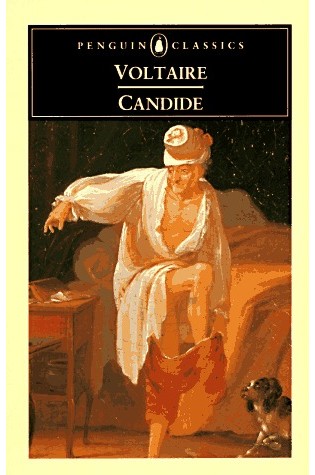 Lists It Appears On:
Lists It Appears On:
- Complete France
- French Together
- Qwik Lit
It was the indifferent shrug and callous intertia that this ‘optimism’ concealed which so angered Voltaire, who found the ‘all for the best’ approach a patently inadequate response to suffering, to natural disasters – such as the recent earthquakes in Lima and Lisbon – not to mention the questions of illness and man-made war. Moreover, as the rebel whose satiric genius had earned him not only international acclaim, but two stays in the Bastille, flogging and exile, Voltaire knew personally what suffering involved.
8 .) La Cousine Bette by Honoré de Balzac
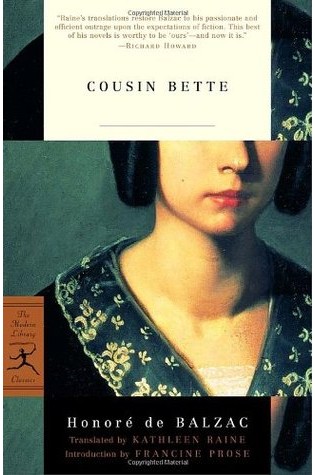 Lists It Appears On:
Lists It Appears On:
- Complete France
- Five Books
- Fluent U
Poor, plain spinster Bette is compelled to survive on the condescending patronage of her socially superior relatives in Paris: her beautiful, saintly cousin Adeline, the philandering Baron Hulot and their daughter Hortense. Already deeply resentful of their wealth, when Bette learns that the man she is in love with plans to marry Hortense, she becomes consumed by the desire to exact her revenge and dedicates herself to the destruction of the Hulot family, plotting their ruin with patient, silent malice. Cousin Bette is a gripping tale of violent jealousy, sexual passion and treachery, and a brilliant portrayal of the grasping, bourgeois society of 1840s Paris. The culmination of the Comedie humaine, Balzac’s epic chronicle of his times, it is one of his greatest triumphs as a novelist.
7 .) La Gloire de Mon Père by Marcel Pagnol
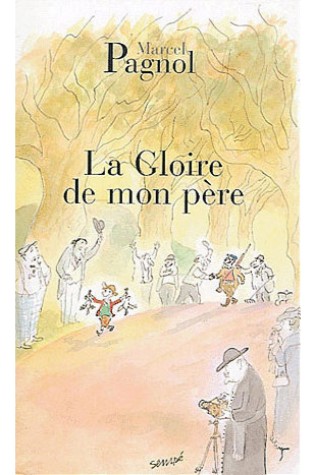 Lists It Appears On:
Lists It Appears On:
- BBC
- Fluent U
- French Together
Un petit Marseillais d’il y a un siècle: l’école primaire ; le cocon familial ; les premières vacances dans les collines, à La Treille ; la première chasse avec son père… Lorsqu il commence à rédiger ses Souvenirs d’enfance, au milieu des années cinquante, Marcel Pagnol est en train de s’éloigner du cinéma., et le théâtre ne lui sourit plus. La Gloire de mon père, dès sa parution, en 1957, est salué comme marquant l’avènement d’un grand prosateur. Joseph, le père instituteur., Augustine, la timide maman., l’oncle Jules, la tante Rosé, le petit frère Paul, deviennent immédiatement aussi populaires que Marius, César ou Panisse.
6 .) Les Fleurs du Mal by Charles Baudelaire
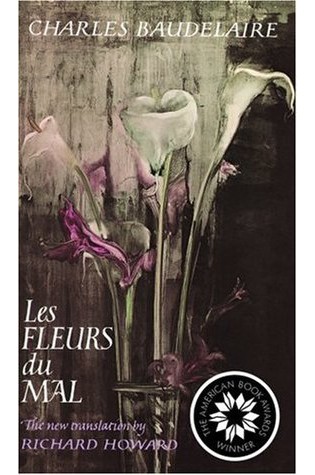 Lists It Appears On:
Lists It Appears On:
- Fluent U
- French Together
- The Culture Trip
Presents the first American translation of the complete text of Baudelaire’s 1857 masterwork
5 .) Le Petit Prince by Antoine de Saint-Exupéry
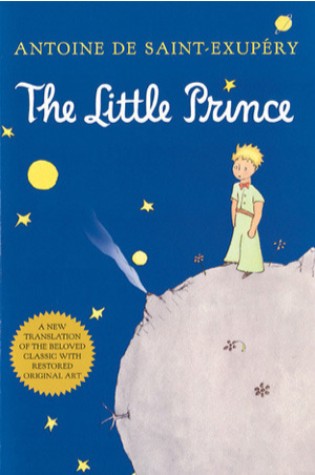 Lists It Appears On:
Lists It Appears On:
- Book Riot
- French Together
- iTalki
- Talkin French
Moral allegory and spiritual autobiography, The Little Prince is the most translated book in the French language. With a timeless charm it tells the story of a little boy who leaves the safety of his own tiny planet to travel the universe, learning the vagaries of adult behaviour through a series of extraordinary encounters. His personal odyssey culminates in a voyage to Earth and further adventures.
4 .) Madame Bovary (1856) by Gustave Flaubert
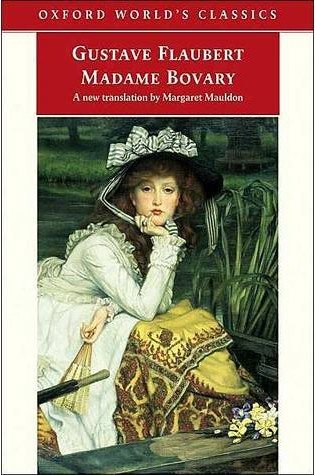 Lists It Appears On:
Lists It Appears On:
- Book Riot
- Fluent U
- My French Life
- Qwik Lit
- The Culture Trip
Madame Bovary is the debut novel of French writer Gustave Flaubert, published in 1856. The character lives beyond her means in order to escape the banalities and emptiness of provincial life. When the novel was first serialized in La Revue de Paris between 1 October 1856 and 15 December 1856, public prosecutors attacked the novel for obscenity. The resulting trial in January 1857 made the story notorious. After Flaubert’s acquittal on 7 February 1857, Madame Bovary became a bestseller in April 1857 when it was published in two volumes. A seminal work of literary realism, the novel is now considered Flaubert’s masterpiece, and one of the most influential literary works in history.
3 .) Notre Dame de Paris (The Hunchback of Notre Dame) by Victor Hugo
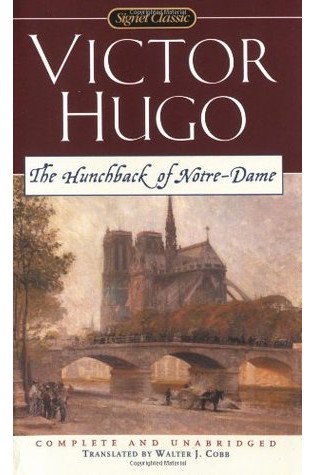 Lists It Appears On:
Lists It Appears On:
- Book Riot
- Complete France
- French Together
- Qwik Lit
- Red Online
This extraordinary historical novel, set in Medieval Paris under the twin towers of its greatest structure and supreme symbol, the cathedral of Notre-Dame, is the haunting drama of Quasimodo, the hunchback; Esmeralda, the gypsy dancer; and Claude Frollo, the priest tortured by the specter of his own damnation. Shaped by a profound sense of tragic irony, it is a work that gives full play to Victor Hugo’s brilliant historical imagination and his remarkable powers of description.
2 .) The Stranger (1942) by Albert Camus
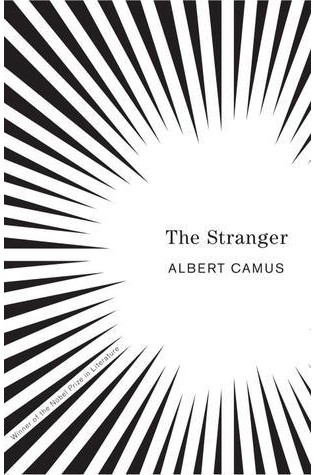 Lists It Appears On:
Lists It Appears On:
- Book Riot
- Fluent U
- French Together
- Quirk Books
- Qwik Lit
- Talkin French
Through the story of an ordinary man unwittingly drawn into a senseless murder on an Algerian beach, Camus explored what he termed “the nakedness of man faced with the absurd.”
1 .) Les Misérables by Victor Hugo
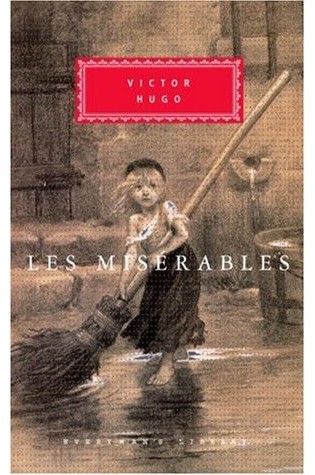 Lists It Appears On:
Lists It Appears On:
- Book Riot
- Complete France
- Five Books
- Fluent U
- iTalki
- Quirk Books
- The Culture Trip
It has been said that Victor Hugo has a street named after him in virtually every town in France. A major reason for the singular celebrity of this most popular and versatile of the great French writers is Les Misérables (1862). In this story of the trials of the peasant Jean Valjean—a man unjustly imprisoned, baffled by destiny, and hounded by his nemesis, the magnificently realized, ambiguously malevolent police detective Javert—Hugo achieves the sort of rare imaginative resonance that allows a work of art to transcend its genre.
The 125+ Additional Best French Books
| # | Book | Author | Lists |
| (Titles Appear On 1 List Each) | |||
| 27 | 20,000 Leagues Under the Sea: | Jules Verne | Quirk Books |
| 28 | A Hard Winter | Lit Hub | |
| 29 | A la Recherche du Temps Perdu | iTalki | |
| 30 | A Man’s Place | Lit Hub | |
| 31 | Beauty and the Beast | Madame de Villeneuve (1740) | The Culture Trip |
| 32 | Between Meals: An Appetite for Paris | Fodors | |
| 33 | Bonjour Tristesse | Francoise Sagan | My French Life |
| 34 | But I’ve Got Ovid | VQR Online | |
| 35 | Chanson Douce | Leila Slimani | Electric Literature |
| 36 | Cookie Jar | VQR Online | |
| 37 | De Nos Frères Blessés | Joseph Andras | Electric Literature |
| 38 | Democracy, Debates, and Daughters | VQR Online | |
| 39 | Ensemble c’est Tout | Anne Gavalda | Talkin French |
| 40 | Entre les Murs | François Bégaudeau | French Together |
| 41 | Et Si C’était Vrai | iTalki | |
| 42 | Fear Factors | VQR Online | |
| 43 | Flowers of Evil | Fodors | |
| 44 | Gargantua and Pantagruel | François Rabelais | The Culture Trip |
| 45 | Germinal (1885) | Emile Zola | Qwik Lit |
| 46 | Gigi (1944) | Colette | Qwik Lit |
| 47 | Hello, Sadness | Francoise Sagan | Electric Literature |
| 48 | In Search of Lost Time | Marcel Proust (1913-1927) | The Culture Trip |
| 49 | Indiana | George Sand (1831) | The Culture Trip |
| 50 | Jean Barois (1913) | Roger Martin du Gard | Qwik Lit |
| 51 | Journey to the Center of the Earth | Jules Verne (1864) | The Culture Trip |
| 52 | Julie, or The New Heloise (1762) | Jean-Jacques Rousseau | Qwik Lit |
| 53 | Justine (1791) | Marquis de Sade | Qwik Lit |
| 54 | L’Adversaire | BBC | |
| 55 | L’Ete Meurtrier | BBC | |
| 56 | L’ASSOMMOIR | Émile Zola | Complete France |
| 57 | L’Enfant Noir | Camara Laye | French Together |
| 58 | LA BELLE ET LA BÊTE | Jeanne-Marie Leprince de Beaumont | Complete France |
| 59 | La Horde du Contre-vent | iTalki | |
| 60 | La Maison de Claudine | Colette | French Together |
| 61 | La Mécanique du Coeur | Mathias Malzieu | French Together |
| 62 | La Petite Fille | M. Linh | Talkin French |
| 63 | La Valse Lente des Tortues | iTalki | |
| 64 | Le Chercheur d’Or | BBC | |
| 65 | Le Comte de Monte-Cristo” | Fluent U | |
| 66 | Le Deuxième Sexe | iTalki | |
| 67 | Le Grand Meaulnes (1913) | Alain-Fournier | Qwik Lit |
| 68 | Le Ventre de l’Atlantique | Fatou Diome | French Together |
| 69 | Les Ames Grises | Philippe Claudel | Talkin French |
| 70 | Les Fleurs Bleues (Blue on Blue) | Raymond Queneau | Five Books |
| 71 | Les Premiers | Xabi Molia | Electric Literature |
| 72 | Les Yeux Jaunes du Crocodile | iTalki | |
| 73 | Lessons in French | Hilary Reyl | Red Online |
| 74 | Losing North: Essays on Cultural Exile | Book Riot | |
| 75 | Maigret’s First Case | Book Riot | |
| 76 | Metronome | iTalki | |
| 77 | Mission to Kala | Book Riot | |
| 78 | Moderato Cantabile | Book Riot | |
| 79 | Mon Père est Femme | Ménage | Talkin French |
| 80 | Murder on the Eiffel Tower | BBC | |
| 81 | My Friends | Lit Hub | |
| 82 | Mysterious American Cat | VQR Online | |
| 83 | Nedjma | Book Riot | |
| 84 | Night Moves | VQR Online | |
| 85 | No Exit | Book Riot | |
| 86 | Once Bitten | VQR Online | |
| 87 | Oscar and the Lady in Pink | Book Riot | |
| 88 | Où on va, papa? | Jean-Louis Fournier | Talkin French |
| 89 | Papillon: | Henri Charrière | Quirk Books |
| 90 | Paris Journal 1956–1964 | Fodors | |
| 91 | Paris to the Moon | Fodors | |
| 92 | Poems of Emile Verhaeren | Book Riot | |
| 93 | Prince of Peace | VQR Online | |
| 94 | Pseudo (Hocus Bogus) | Romain Gary | Five Books |
| 95 | Que serais-je sans toi? | Guillaume Musso | Talkin French |
| 96 | Remembrance of Thing’s Past (1913-1927) | Marcel Proust | Qwik Lit |
| 97 | Rhinoceros | Book Riot | |
| 98 | Sagan, Paris 1954 | Anne Berest | My French Life |
| 99 | Sarah’s Key | Book Riot | |
| 100 | Savage Season | Book Riot | |
| 101 | Selected Poems | Book Riot | |
| 102 | Silent Day in Tangier | Book Riot | |
| 103 | So Long a Letter | Book Riot | |
| 104 | Soumission | Michel Houellebecq | French Together |
| 105 | Sous les Vents de Neptune | BBC | |
| 106 | Southern Mail (1929) | Antoine de Saint Exupery | Qwik Lit |
| 107 | Sphinx | Book Riot | |
| 108 | Stupeur et Tremblements | Amélie Nothomb | French Together |
| 109 | Suite Française | Book Riot | |
| 110 | Suspended Sentences: Three Novellas | Book Riot | |
| 111 | Swann’s Way | Book Riot | |
| 112 | Tartuffe” | Fluent U | |
| 113 | The Book of the City of Ladies | Christine de Pizan (1405) | The Culture Trip |
| 114 | The Charterhouse of Parma (1839) | Stendhal | Qwik Lit |
| 115 | The Cid | Book Riot | |
| 116 | The Complete Essays | Book Riot | |
| 117 | The Count of Monte Cristo (1844) | Alexandre Dumas | Qwik Lit |
| 118 | The Day of the Dog (1996) | Caroline Lamarche | Qwik Lit |
| 119 | The Elegance of the Hedgehog | Muriel Barbery | My French Life |
| 120 | The End of Eddy | Edouard Louis | Electric Literature |
| 121 | The Extraordinary Journey of the Fakir who got trapped in an Ikea Wardrobe | Book Riot | |
| 122 | The Fairies are Thirsty | Book Riot | |
| 123 | The Flaneur | Fodors | |
| 124 | The Gods are Athirst (1912) | Anatole France | Qwik Lit |
| 125 | The Grand Repudiation | Book Riot | |
| 126 | The Human Comedy (1832-1854) | Honore de Balzac | Qwik Lit |
| 127 | The Illusionist | Book Riot | |
| 128 | The Imaginary Invalid | Book Riot | |
| 129 | The Ladies’ Delight | Emile Zola | Red Online |
| 130 | The Library of Unrequited Love | Book Riot | |
| 131 | The Lover (1984) | Marguerite Duras | Qwik Lit |
| 132 | The Male Glance | VQR Online | |
| 133 | The Map and the Territory | Michel Houllebecq | Qwik Lit |
| 134 | The Masterpiece | Émile Zola (1886) | The Culture Trip |
| 135 | The Paris Wife | Paula McClain | Red Online |
| 136 | The Poor Man’s Son | Book Riot | |
| 137 | The Ravishing of Lol Stein | Lit Hub | |
| 138 | The Red and the Black | Book Riot | |
| 139 | The Red Collar | Book Riot | |
| 140 | The Rights of the Reader | Book Riot | |
| 141 | The Sand Child | Book Riot | |
| 142 | The Savage Night | Book Riot | |
| 143 | The Scorpion: Or, The Imaginary Confession | Book Riot | |
| 144 | The Second Sex | Book Riot | |
| 145 | The Simple Past | Book Riot | |
| 146 | The Song of Roland | Book Riot | |
| 147 | The Suns of Independence | Book Riot | |
| 148 | The Sweet Life in Paris: Delicious Adventures in the World’s Most Glorious and Perplexing City | Fodors | |
| 149 | The Tales of Mother Goose | Charles Perrault (1696) | The Culture Trip |
| 150 | The Vatican Cellars (1914) | Andre Gide | Qwik Lit |
| 151 | The Wound | Book Riot | |
| 152 | The Wretched of the Earth | Book Riot | |
| 153 | The Year of the Elephant | Book Riot | |
| 154 | Thérèse and Isabelle | Book Riot | |
| 155 | Tom Is Dead | Book Riot | |
| 156 | Twenty Thousand Leagues Under the Sea | Book Riot | |
| 157 | VOYAGE AU BOUT DE LA NUIT | Céline | Complete France |
| 158 | Voyage au Pays des Arbres | J.M.G Le Clézio | Talkin French |
| 159 | W, or The Memory of Childhood (1975) | George Perec | Qwik Lit |
| 160 | Waiting For Godot | Book Riot | |
| 161 | Will You Be There? | Book Riot | |
| 162 | With Downcast Eyes | Book Riot | |
| 163 | Zazie dans le Métro | Raymond Queneau | French Together |
17 Best Literature Books From France Sources/Lists
| Source | Article |
| BBC | French novels much loved by readers – BBC News |
| Book Riot | 100 Must-Read Books Translated From French – Book Riot |
| Complete France | 12 classic French novels you should read | Holiday ideas | Complete … |
| Electric Literature | 7 Novels that Explore the Complexity of Modern France |
| Five Books | The Greatest French Novels | Five Books |
| Fluent U | 10 Classic French Books That Pack a Punch for Learners Today |
| Fodors | 10 Books to Read Before You Go to Paris – Fodors Travel Guide |
| French Together | The 16 Best French Books to Read in 2018 – French Together |
| iTalki | The Wonderful World Of French Books – french learning article – italki |
| Lit Hub | Five Necessary French Books You Should Read | Literary Hub |
| My French Life | French literature must reads: our 5 favourite French books |
| Quirk Books | French 101: The Best Books for Bastille Day | Quirk Books : Publishers … |
| Qwik Lit | Le Mot Juste: 25 Classic French Novels | Qwiklit |
| Red Online | Best books set in Paris | French literature | Books – Red Online |
| Talkin French | 10 Great French Novels Learn French for All Levels-Talk in French |
| The Culture Trip | 12 French Classics Every Book Lover Should Read – Culture Trip |
| VQR Online | The Ten French Novels Which I . . . | VQR Online |
